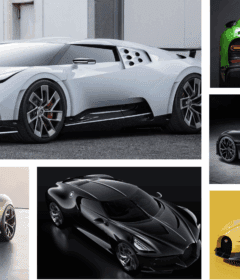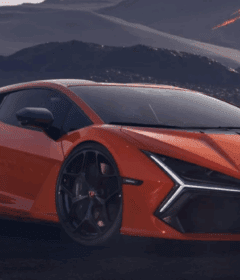Supercars Not to Miss
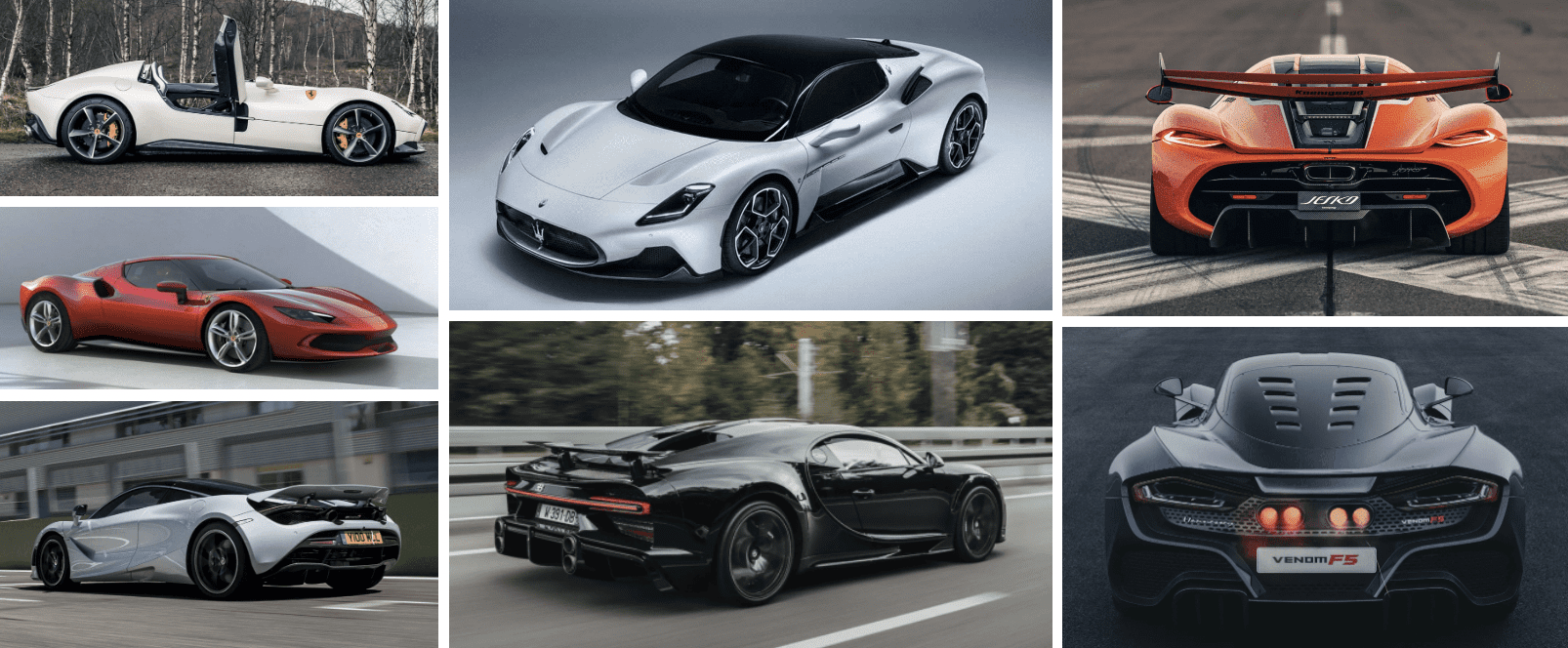
Supercars Not to Miss – The definition of a supercar describes an expensive car that’s flashy, fast, luxurious, and prestigious. Think of a supercar as top of the line — the best of the best.
Supercars Not to Miss – Supercar vs. Sports Car
Sports cars are more luxurious and are designed to make driving easy and comfortable, with a sleek design and high-tech features.
However, not all sports cars are supercars.
A supercar goes faster, costs more, and can be more nuanced to drive.
Sports cars are suitable for daily driving, while a supercar may be almost too prized and powerful to drive in traffic.
According to Boss Hunting, “supercars are harder to handle, usually have an output above 500 horsepower, and their price point places them in a slimmer percentile of affordability compared to [sports cars].”
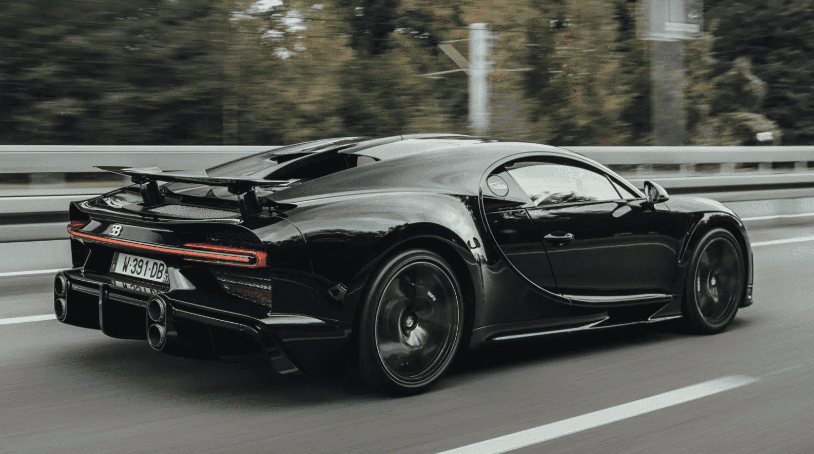
Supercars Not to Miss – Bugatti Chiron
The Veyron’s reign as the world fastest production car is at an end, and the usurper comes from within.
At approximately $2M, the Chiron retains the Veyron’s fundamental proportions and powertrain, but it’s new in every other conceivable way, and built to bend physics to breaking point.
The Chiron is not a hybrid.
Unlike its closest competitors – the McLaren P1, LaFerrari and Porsche 918 – it relies solely on fossil fuels.
Its engine is a development of the Veyron’s 8.0-litre quad-turbo W16, its gearbox a strengthened version of the Veyron’s seven-speed twin-clutch, and like the Veyron it deploys its immense power through all four wheels.
The Veyron Super Sport produces a piffling 1183bhp and 1106lb ft of torque, the Chiron develops 1479bhp and 1180lb ft.
Driven at a constant top speed the Veyron could drain its 100-litre fuel tank in 12 minutes, the Chiron can do it in 9.
It will accelerate from 0-62mph in less than 2.5 seconds, 0-124mph in less than 6.5 and 0-186mph in under 13.6.
Take a moment to let that last one sink in.
That’s 2.9 seconds faster than a P1 and a second quicker than the Veyron Super Sport.
Then there’s the top speed, which Bugatti has limited to 261mph on the standard Chiron – a token 3mph more than the Veyron Super Sport – but raised to 273mph on the Chiron Super Sport.
Price is about $4,000,000
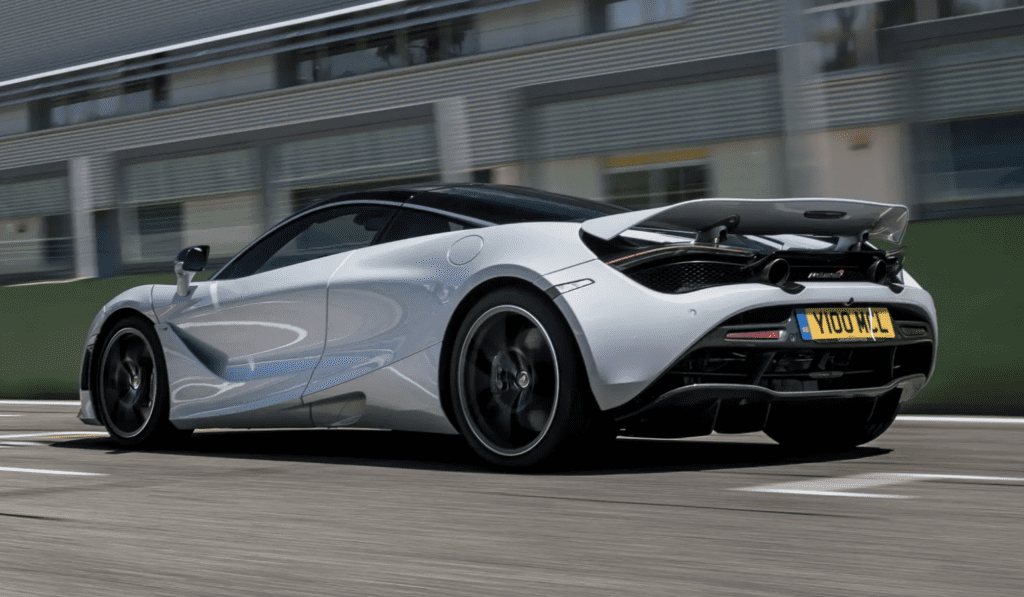
Supercars Not to Miss – McLaren 720S
The 720S is easy to drive.
Common sense demands acclimatization, but you get settled incredibly quickly.
Tire noise and mechanical thrum is negligible at regular cruising speeds.
Turn up the heat and the McLaren does that thing all sub-3.0 seconds to 60mph cars do: compress time.
You are here, now you are there: the bit in between is simply vaporized.
But rarely has the time-warp been performed with so little conspicuous drama.
The twin turbos are ultra-low inertia, twin scroll jobs that spool up much faster to reduce lag and sharpen throttle response.
The red line in first and second gear is 8100rpm, 8200 in the next four. Keep the throttle pinned throughout, and big numbers rack up very rapidly indeed.
Shift times on the seven-speed dual-shift ’box are 45 per cent faster than even the 675 LT delivers.
You can sense the chassis electronics doing their thing, but only just.
The 720S’s limits are somewhere beyond sky-high and out in the stratosphere.
McLaren has reworked the harmonics on the new exhaust system too, and the optional Sports Exhaust uses an intake sound generator to pump more volume into the cabin via twin vents mounted between the seats on the rear bulkhead.
In standard form, the 720S is just five per cent off the 570GT in terms of noise levels, so it can do the long-haul; the sports exhaust moves it much closer to the 675 LT on the audio spectrum.
Overall, and purely subjectively, we’d still say a normally aspirated engine has the edge – a shout out here to Audi’s brilliant and rather under-appreciated R8 – but as turbo motors go, the 720S is a new benchmark.
Especially if you do what McLaren calls a ‘hot start’, which means sticking it in track/track mode, at which point it emits an entirely pointless but highly enjoyable wail.
Price is $300,000
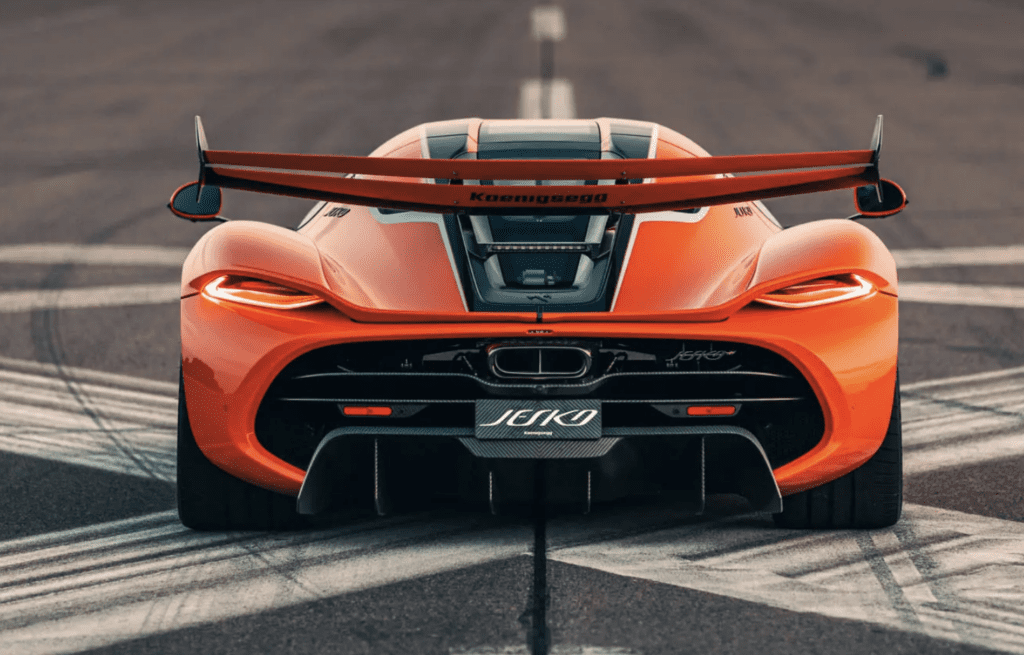
Supercars Not to Miss – Koenigsegg Jesko
This is a pre-series production car, revealed just as Koenigsegg begins “pre-assembly” of the first customer chassis.
125 Jeskos are due to be built – split between the regular car and the low-drag Absolut – at a rate of 40 to 50 a year.
In brief, the Jesko uses a 5.0-liter twin-turbocharged V8 that revs to 8,500rpm and makes around 1,600bhp on E85 biofuel.
It drives the rear-wheels through a nine-speed transmission – with SEVEN wet, multi-disc clutches – that “represents a scale of evolution not seen since the development of modern dual-clutch technology at the turn of the century”.
Koenigsegg claims the so-called “Light Speed Transmission” (LST) is set to be the world’s fastest-shifting gearbox.
The standard car makes around 800kg downforce at 155mph, or 1,000kg at 171mph.
The Absolut subs the massive, active rear wing that makes those numbers possible for a longer tail and various other aerodynamic modifications that should give it an “unbelievably fast” top speed.
Price is $2,000,000 plus.
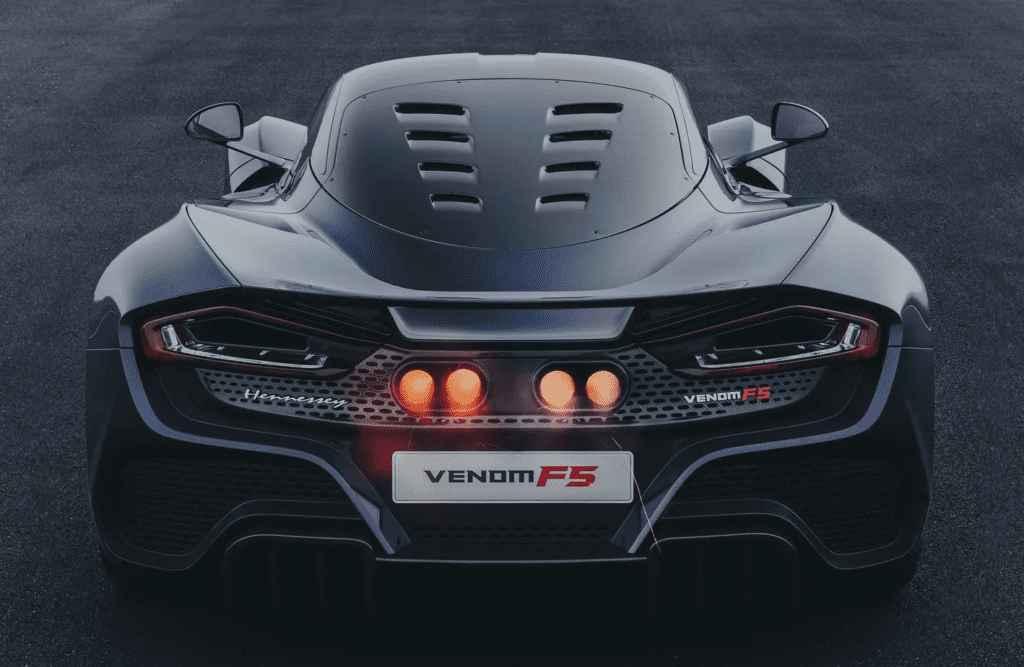
Supercars Not to Miss – Hennessey Venom F5
Here’s a look at the first production prototype of the Hennessey Venom F5 – the long-awaited 300mph+ all-American hypercar, and spoiler alert… it doesn’t disappoint.
The F5 name isderived from the Fujita tornado intensity scale, F5 being the most intense with wind speeds of up to 318mph.
The F5’s engine is a 6.6-liter twin-turbo V8 called Fury, that produces over 1,792bhp at 8,000rpm and 1,192lb ft of torque at 5,000rpm making it, for now at least, the most powerful road car engine in the world.
Thanks to its bespoke carbon tub, carbon panels and not a lot else it weighs 1,360kg dry, just 30kg more than a Ferrari F8 Tributo and yet it has over 1,000bhp more.
Power to weight ratio is 1,298hp-per-tonne. I’ll let that one marinade for a moment.
Although based on GM’s classic LS pushrod V8, everything from the dry sump, to the cast-iron block, titanium intake valves, dustbin-lid turbos, sprinkler-sized fuel injectors (two per cylinder) and engine management system is bespoke and adapted from the world of drag racing, which isn’t surprising when you’re producing as much power as seven and a half Golf GTIs.
The gearbox is a seven-speed single clutch semi-auto with paddle shifts, although given the unholy grunt-to-grip ratio, available power is carefully managed, especially in the first four gears, otherwise you’d be spinning your tires all the way to 150mph and beyond.
Early simulations predict a modest 0-62mph time of 2.6 seconds, followed by fireworks: 0-124mph in 4.7s and 0-250mph in 15.5s.
That last figure is more than twice as fast as a Bugatti Chiron, and over seven secs quicker than a Koenigsegg Regera – the current 0-250-0mph champ.
Target top speed is 311mph (500kmh), the theoretical top speed (taking into account the 8,500rpm limiter and gear ratios) is around 340mph, although the true, drag-limited top speed lies somewhere between those two numbers.
Price is approximately $2,000,000

Supercars Not to Miss – Lamborghini Huracán STO
The new STO (Super Trofeo Omologata) claims to take the road-going Lambo experience a step closer to the Super Trofeo Evo one make racer and GT3 Evo cars.
Lamborghini claims it’s the first car they’ve developed where track ability takes precedence over road driving.
The main mods over the Performante are the removal of the front driveshafts – the STO is purely rear-drive – the addition of rear-wheel steering, further weight saving and a lot of aero work.
All told it’s 43kg lighter, which doesn’t sound that much. Apparently removing the front drive gubbins only saves 20kg, while 4WS adds 8kg back in.
A thinner windscreen is 20 per cent lighter, there are magnesium wheels and carbon body panels that contribute to a 1,339kg dry weight.
The aero, as you can see, has moved on more. And not subtly.
Lambo says downforce is up 53 per cent compared to the Performante, which – some background reading suggests – developed 350kg at 186mph.
Interestingly, Lambo has abandoned the ALA technology that ingested air at the base of the rear spoiler’s pillars and blew it out along the trailing edge.
This is a simpler strategy: a manually adjustable, three position rear wing.
Price is approximately $400,000
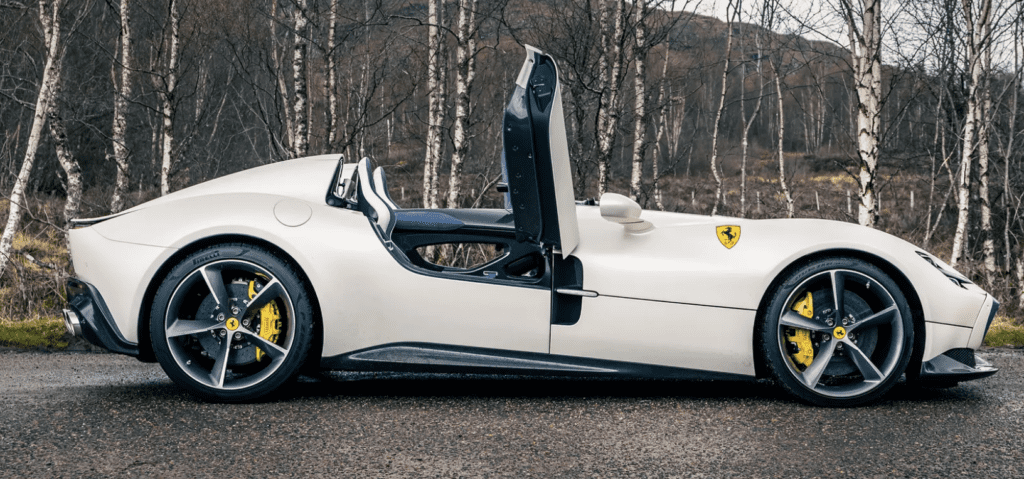
Supercars Not to Miss – Ferrari Monza
A spectacular piece of business from Ferrari. Welcome to the first of Maranello’s new line of ‘Icona’ cars – limited editions inspired by Ferrari’s illustrious back catalogue. The Monza – a roofless, windowless rollerskate based on the 812 Superfast – is the first of these. Only 499 will be built, and you guessed it. They’re all sold out, at £1.4m a pop including tax.
The stunning bodywork is inspired by the 750 Monza and 860 Monza racing cars of the mid-1950s, referenced in the voluptuous front wing curves, those abrupt rear buttresses, and a choice of seating.
Ferrari offered a duo of Monza bodystyles: hedonistic single-seat SP1, or this more sociable two-seat SP2. Ferrari won’t reveal what the split between SP1 and SP2 commissions was, but word is each Ferrari-approved buyer could only pick one. No matching pairs for your collection.
All of that gorgeous coachwork is carbon fibre, and it’s all expensively bespoke. Even the LED light units – unusually a slender lightbar instead of quad round-lenses at the rear – and those turbine-spoke wheels are fresh, unrecycled from other Ferraris.
Underneath of course, the Monza’s foundations are more familiar, but hardly ordinary. The front-mid-mounted 6.5-litre naturally aspirated V12 engine is lifted from Ferrari’s psychotic super-GT, the 812 Superfast. Having received a token 10bhp and 1lb ft power bump, it slots in under the new front-hinged clamshell bonnet, assaulting the usual seven-speed twin-clutch gearbox with a total of 799bhp and 530lb ft. There’s no SF90-style hybrid boost, and it’s rear-wheel drive. Gulp.
While the Monza has jettisoned anything resembling weather protection, it’s far from being a featherweight Caterham that’s had some opera lessons. The SP1 weighs in at 1,500kg dry, while this SP2 is 1,520kg. Ready to roll with fuel, fluids and a driver strapped inside, it’ll be knocking on the door of 1.7 tons.
Price is about $1,800,000
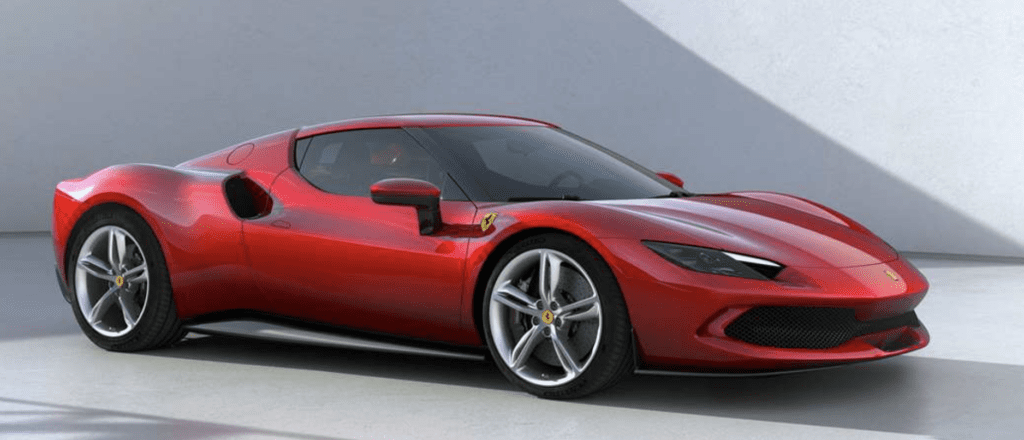
Supercars Not to Miss – Ferrari 296 GTB
As electrification takes over, even Ferrari has been forced to start moving away from its staple diet of V8 and V12 power plants.
Traditional Ferrari road cars use front-mounted V12s and the latest 812 Superfast is a brazen modern expression of this long history, blurring the lines between supercar and GT.
Up steps the 296 GTB, Ferrari’s first road-going V6 engine supplemented by two turbochargers and an electric motor.
Combined, the Ferrari 296 GTB delivers 819bhp which is sufficient enough to propel the plug-in hybrid supercar to 100km/h (62mph) in only 2.9 seconds and on to a top speed of over 330km/h (205mph).
But mid-engined machines are also a staple of the range and the models that spring to mind when you think ‘Italian supercar’.
The 296 GTB properly changes things up after 13 years of the same basic 458-derived platform and V8 engines, with its hybridized twin-turbo V6 and monster 830PS (610kW) output.
Yet in spite of that near hypercar-level power, the 296 is an ally to your ego, deftly deploying its performance potential in a way that doesn’t overwhelm.
Price is about $325,000

Supercars Not to Miss – Maserati MC20
It’s prettiness and elegance on the outside is matched by a beautifully judged chassis and what is overall a superb driving experience.
The Nettuno V6 is clever too and delivers its 630PS (463kW) with a real wallop, even if it is lacking the charisma of the old V8.
It’s also simpler than rivals, electing not to take the middle ground hybrid route and instead offer an engine, or an electric version.
The latter is still to come but the petrol-powered car has impressed everyone so far.
Then there’s the open-topped Cielo, which thanks to the MC20’s carbon structure, should offer all the finely-honed performance and feel of the coupe.
Price is approximately $225,000

Ferrari F8 Tributo
Introduced in March at the Geneva Motor Show, the F8 Tributo is the successor to the 488 GTB, a rakish machine whose V-8 power plant—a four-time Engine of the Year winner—represents the apex of nearly a half-century of eight-cylinder development.
The engineering brief for the F8 was direct: combine the power and precision of the track-oriented 488 Pista with the manners and comfort of the 488 GTB.
The F8 Tributo delivers the two things you want from a Prancing Horse—head-turning style and performance.
Introduced in 2019, the sporty coupé is the V-8–powered follow-up to the 488.
The powertrain, which is mated to a seven-speed dual-clutch transmission, isn’t the marque’s most potent, but it still delivers a robust 710 hp and 568 ft lbs of torque.
Thanks to that the car can zip from zero to 60 mph in under three seconds and hit a top speed of 211 mph.
The F8 Spider comes with a retractable roof, though that adds nearly $40,000 to the starting price.
Price is approximately $300,000
According to Wikipedia, a supercar – also called exotic car – is a loosely defined description of street-legal, high-performance sports cars. Since the 2010s, the term hypercar has come into use for the highest performing supercars.

